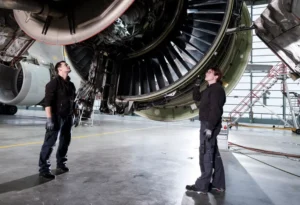
When it comes to aviation safety, most people focus on skilled pilots, reliable engines, and favorable weather conditions—but there’s another critical factor working quietly behind the scenes: aircraft documentation. Every maintenance log, inspection report, and compliance certificate serves as a safeguard that ensures an aircraft is truly ready for the skies. Whether you’re a frequent flyer or someone working in the aviation industry, understanding the value of meticulous records can make all the difference. In fact, for professionals like a certified aircraft technician Florida operators trust, accurate documentation isn’t just paperwork—it’s a lifeline that upholds both safety and regulatory compliance.
What is Aircraft Documentation?
In aviation, aircraft documentation refers to the complete set of official records that detail an aircraft’s condition, maintenance history, and operational procedures. This documentation is not optional—it is a legal and safety requirement that ensures an aircraft remains in top operational condition throughout its lifespan.
Types of Aircraft Documentation
-
Maintenance Logs – Records of every inspection, repair, and part replacement carried out on the aircraft.
-
Flight Manuals – Comprehensive guides for pilots detailing aircraft systems, performance data, and operational procedures.
-
Compliance Records – Proof that the aircraft meets regulatory standards and manufacturer guidelines.
-
Airworthiness Certificates – Official approval from aviation authorities confirming the aircraft is safe to operate.
Why Documentation Matters for Aviation Professionals
For pilots, accurate documentation ensures they operate within safe performance limits. For engineers and a certified aircraft technician Florida operators rely on, these records provide the necessary information to diagnose issues, perform repairs, and schedule preventive maintenance. For regulatory bodies, documentation is the evidence needed to confirm compliance with strict aviation standards.
Regulatory Requirements for Aircraft Documentation
Aviation safety is governed by some of the most rigorous regulations in the world, and documentation lies at the heart of compliance.
Major Aviation Authorities
-
FAA (Federal Aviation Administration) – Oversees civil aviation safety in the United States.
-
EASA (European Union Aviation Safety Agency) – Regulates and standardizes aviation safety across EU member states.
-
ICAO (International Civil Aviation Organization) – Establishes global aviation safety guidelines followed by national authorities.
Mandatory Record-Keeping Rules
-
All maintenance and repairs must be logged in detail.
-
Flight hours and cycles must be accurately tracked.
-
Modifications, software updates, and part replacements must be documented.
-
Records must be stored for a specified period (often years) for inspection.
Consequences of Non-Compliance
-
Fines – Regulatory authorities can issue heavy penalties.
-
Grounding of Aircraft – Planes can be taken out of service until records are corrected.
-
Revoked Licenses – Pilots, technicians, or operators can lose certification for repeated violations.
How Documentation Ensures Aircraft Safety
Proper documentation is more than a regulatory requirement—it’s an active safeguard that reduces risks before they become critical.
Maintenance Tracking and Inspections
Maintenance logs are the first line of defense against mechanical failures. By tracking every inspection, technicians can spot patterns that indicate potential problems, such as recurring faults or unusual wear on parts.
-
Preventive Maintenance – Scheduled checks that aim to detect and fix issues before they cause downtime or danger.
-
Corrective Maintenance – Repairs made after an issue has been detected, guided by past documentation to avoid repeated failures.
Flight Readiness and Airworthiness
Before any aircraft leaves the ground, documentation confirms its readiness to fly.
-
Pre-Flight Checks – Pilots and ground crew review technical logs, inspection reports, and clearance documents to ensure no safety issues are pending.
-
Airworthiness Directives (ADs) – Issued by authorities like the FAA and EASA, these are mandatory compliance instructions for known safety concerns. Documentation ensures ADs are tracked and fulfilled without delay.
Pilot and Crew Operations
Operational safety also depends on proper documentation of crew procedures.
-
Standard Operating Procedures (SOPs) – Detailed step-by-step instructions for normal and emergency situations.
-
Flight Manuals – Provide data on aircraft handling, fuel management, weight limits, and system operations.
-
Emergency Protocols – Documentation ensures every crew member knows exactly what to do in a crisis, minimizing confusion and error.Real-World Incidents Linked to Poor Documentation
History has shown that even the smallest gaps in aircraft documentation can lead to severe consequences. Missing maintenance logs, inaccurate repair records, or overlooked airworthiness directives have been contributing factors in multiple aviation incidents.
Case Studies
-
The 1985 Japan Airlines Flight 123 Disaster – Investigations revealed that improper repairs on the rear pressure bulkhead, combined with inadequate maintenance documentation, led to a catastrophic structural failure.
-
2008 Spanair Flight 5022 Crash – Faulty takeoff configuration warnings were linked to overlooked maintenance issues. Proper documentation could have flagged the unresolved faults earlier.
-
Helicopter Fleet Groundings in Offshore Operations – In several cases, missing component life-cycle records forced entire fleets to be grounded until compliance could be proven.
Lessons Learned
-
Documentation is as critical as physical inspections—without accurate records, maintenance teams may miss life-threatening issues.
-
Regulators and operators must treat paperwork as part of the safety system, not an administrative afterthought.
-
Consistent audits and digital records reduce the risk of oversights.
Digital Transformation in Aircraft Documentation
The aviation industry is undergoing a technological shift, moving from bulky paper binders to secure, cloud-based systems.
From Paper to Electronic Logbooks
Electronic Technical Logbooks (ETLs) allow technicians, pilots, and regulators to access aircraft records instantly from anywhere in the world. This eliminates the delays caused by manual record-keeping and physical document transfers.
Key Benefits
-
Accessibility – Records are available to authorized personnel 24/7, improving decision-making speed.
-
Error Reduction – Automated data entry and built-in validation checks reduce human mistakes.
-
Real-Time Updates – Any maintenance action or inspection is logged immediately, ensuring no data is lost between shifts.
Cybersecurity Considerations
While digital systems improve efficiency, they also introduce new risks. Unauthorized access, data tampering, or system outages can disrupt operations. To mitigate this:
-
Implement multi-factor authentication.
-
Use encrypted data storage and transfer.
-
Conduct regular penetration testing to identify vulnerabilities.
Best Practices for Maintaining Accurate Documentation
A well-maintained documentation system is a team effort between engineers, technicians, pilots, and administrative staff.
1. Conduct Regular Audits
Internal and external audits ensure compliance with aviation authority requirements. These reviews catch inconsistencies before they become safety hazards.
2. Use Standardized Formats
Standard templates for maintenance logs, inspection reports, and operational records make documentation easier to read, share, and verify.
3. Provide Ongoing Training
Technicians, engineers, and flight crew should receive periodic training on proper record-keeping methods. This ensures everyone understands the regulatory requirements and the safety importance of accurate documentation.
4. Integrate with Maintenance Management Systems
Linking documentation to aircraft health monitoring systems helps synchronize physical inspections with recorded data, creating a complete safety picture.
Conclusion:
While engines, avionics, and aerodynamic design often take center stage in discussions about aviation safety, the truth is that aircraft documentation is every bit as important as any mechanical system on board. These records are the invisible threads connecting every inspection, every repair, and every operational decision, ensuring that no critical detail is overlooked.
FAQs
1. What is aircraft documentation in aviation?
Aircraft documentation refers to all official records that detail an aircraft’s maintenance history, operational procedures, inspections, and compliance status. These include maintenance logs, flight manuals, airworthiness certificates, and regulatory compliance reports.
2. Why is aircraft documentation important for flight safety?
Accurate documentation ensures that every maintenance task, repair, and inspection is recorded and verified. This helps detect mechanical issues early, maintain regulatory compliance, and confirm an aircraft’s readiness before each flight.
3. Who is responsible for maintaining aircraft documentation?
Aircraft documentation is a shared responsibility between maintenance engineers, certified aircraft technicians, pilots, and the airline’s administrative staff. Regulatory authorities may also review these records during audits and inspections.
4. What happens if aircraft documentation is incomplete or missing?
Missing or inaccurate documentation can lead to regulatory penalties, grounding of the aircraft, loss of certification, and in extreme cases, accidents caused by overlooked safety issues.
5. How is technology changing aircraft documentation?
The aviation industry is shifting from paper-based records to digital logbooks and cloud-based maintenance systems. This transition improves accessibility, reduces errors, enables real-time updates, and strengthens data security when proper cybersecurity measures are in place.


